(updated again)
Here it is !
The first plot of the Von/Voff of 90 RES64A relays, found on vseste's eBay store in Moldavia:
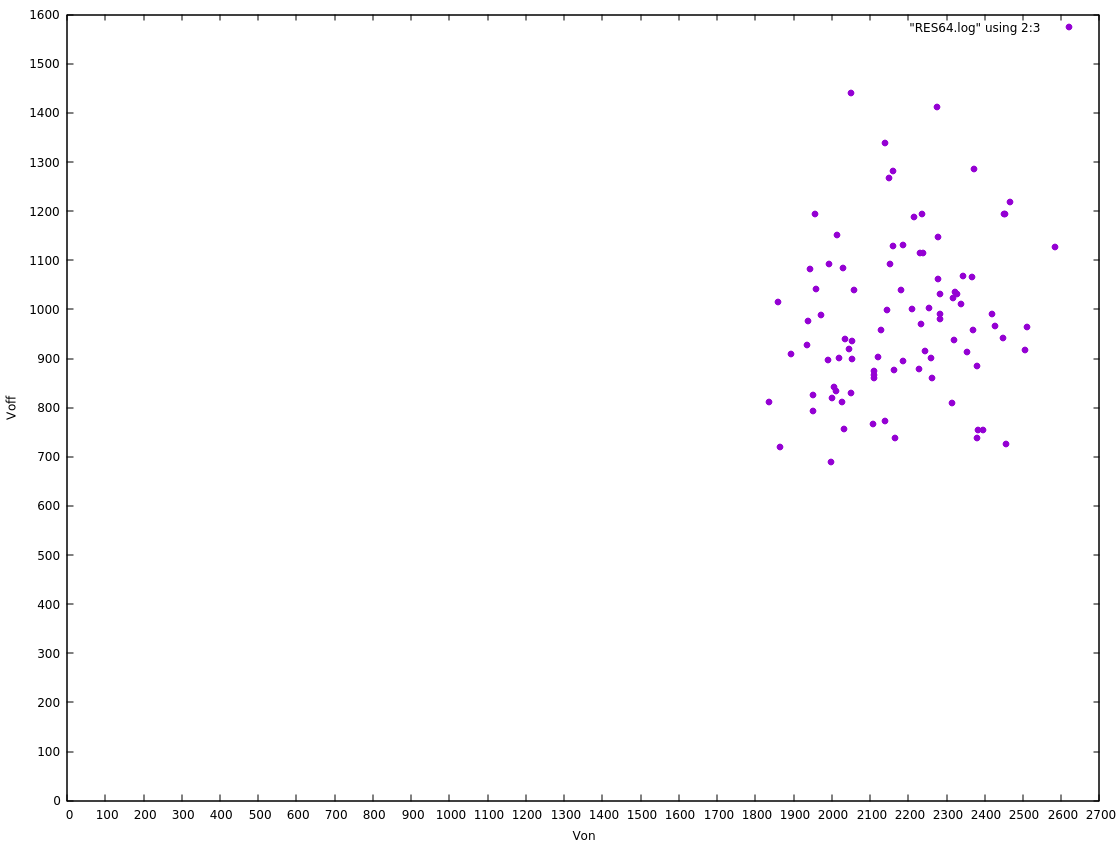
The range is extended because the relay is in series with 4×2K Ohm resistors, the ratio is about ×5. Add another ×100 ratio because I count in steps of 10mV. What matters is that ALL the parts are tested in the exact same conditions and we have a pretty good scatter pattern. I still have 60 parts to test and 110 should arrive in the coming weeks.
I have uploaded the script on the files section.
153 relays have been tested and the results are looking good. 1 relay was DOA and will be sacrificed during an autopsy.
I have uploaded the raw data as RES64.152ok.log and here are some early plots :
X-Y plot
gnuplot script:
set xtics 0.2 set ytics 0.2 set xr [0:5.5] set yr [0:3.5] set xlabel 'Von' set ylabel 'Voff' d(x)=x plot "RES64.log" using ($2/500):($3/500) w points pt 7, d(x) notitle with lines linestyle 2
I have traced the diagonal line because the distance from the point to the diagonal indicates the hysteresis.
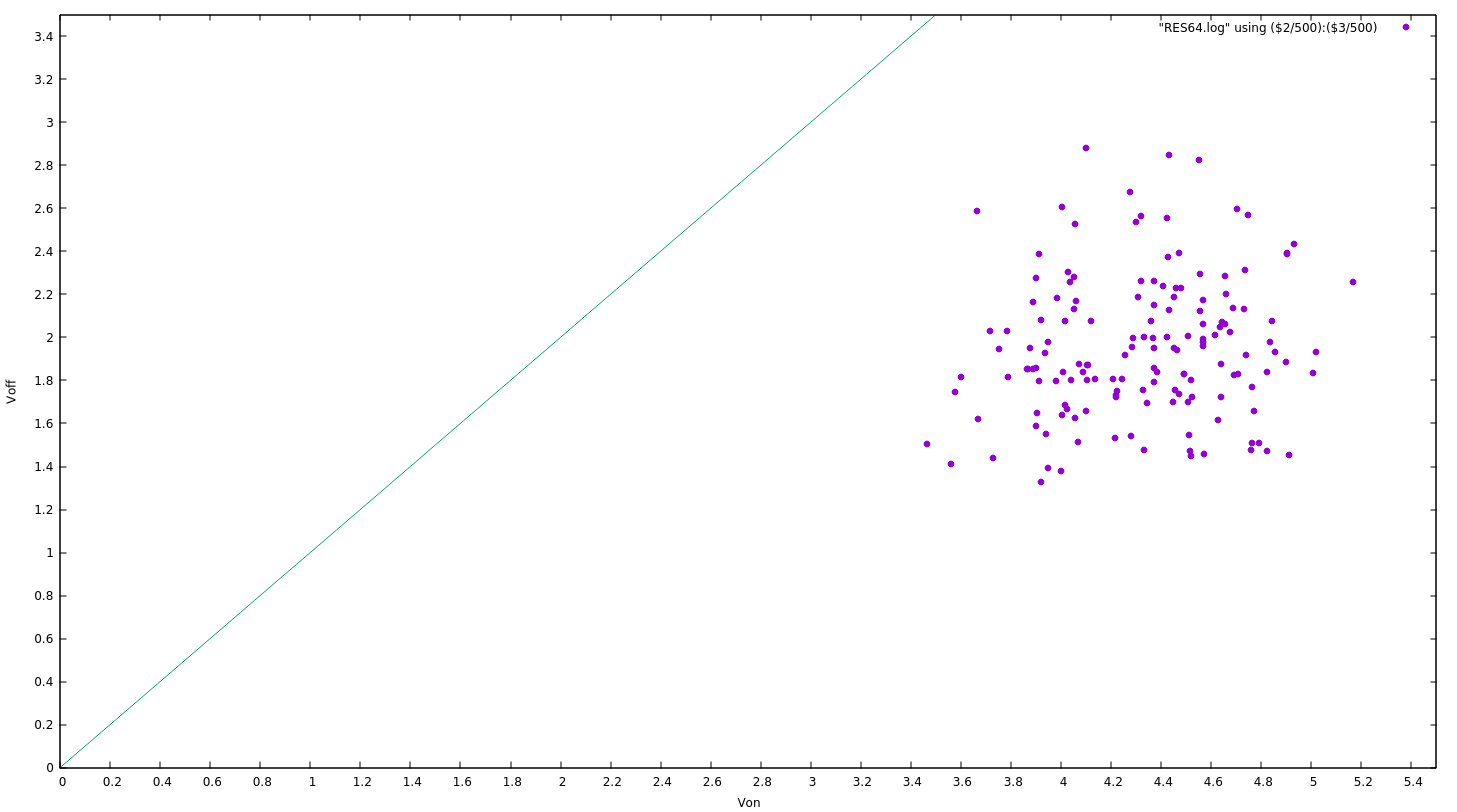
There are two applications for the relays and they are in 2 zones of the dot cloud :
- Amplifier/buffer : this requires a low Von so it's the leftmost dots
- Latch/flip-flop : they require a large hysteresis so they are furthest from the diagonal line.
The "dots" will be allocated later when I have the whole stock but we can already see some of them used for specific purposes.
Hysteresis
gnuplot script:
set ytics 0.5 set xtics 10 set ylabel 'Hysteresis' set xlabel 'Part sn#' set yr [0:5] set xr [0:153] plot "RES64.log" using 1:(($2-$3)/500) w points pt 7
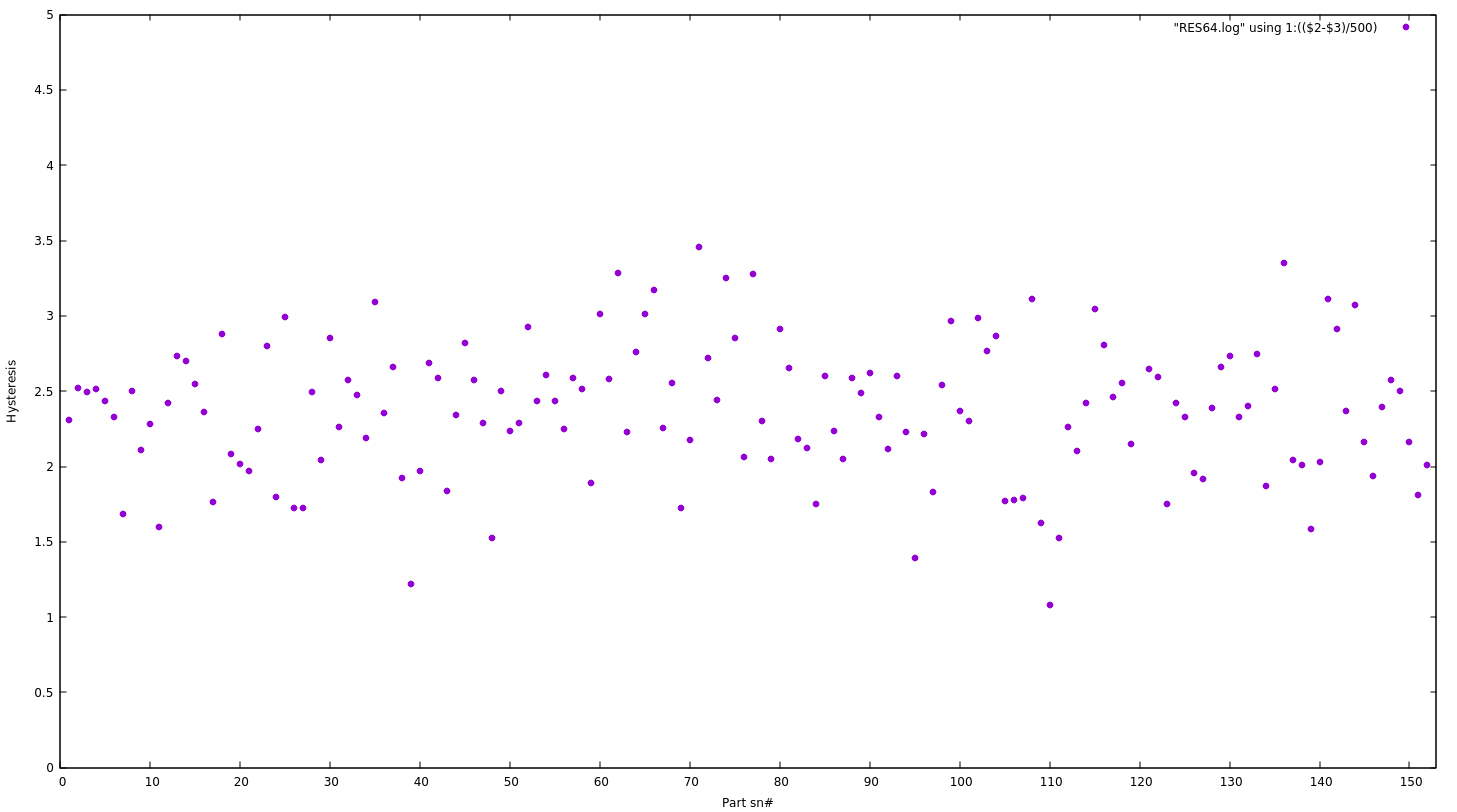
Apart from a few outliers, hysteresis is well between 1.5 and 3.5V.
- The low hysteresis parts are suited as buffers, to lower the source's required swing
- The high hysteresis parts are suited as latches, for better reliability
Candidates for the buffers can be selected by first sorting the list by hysteresis, then sorting by Von.
Margin
gnuplot:
set xr [0:153] set yr [0:6] set ytics 0.2 set xtics 10 set xlabel 'Part sn#' set ylabel 'V' plot "RES64.log" using 1:($2/500) title "Von" w points pt 7, "RES64.log" using 1:($3/500) title "Voff" w points pt 7
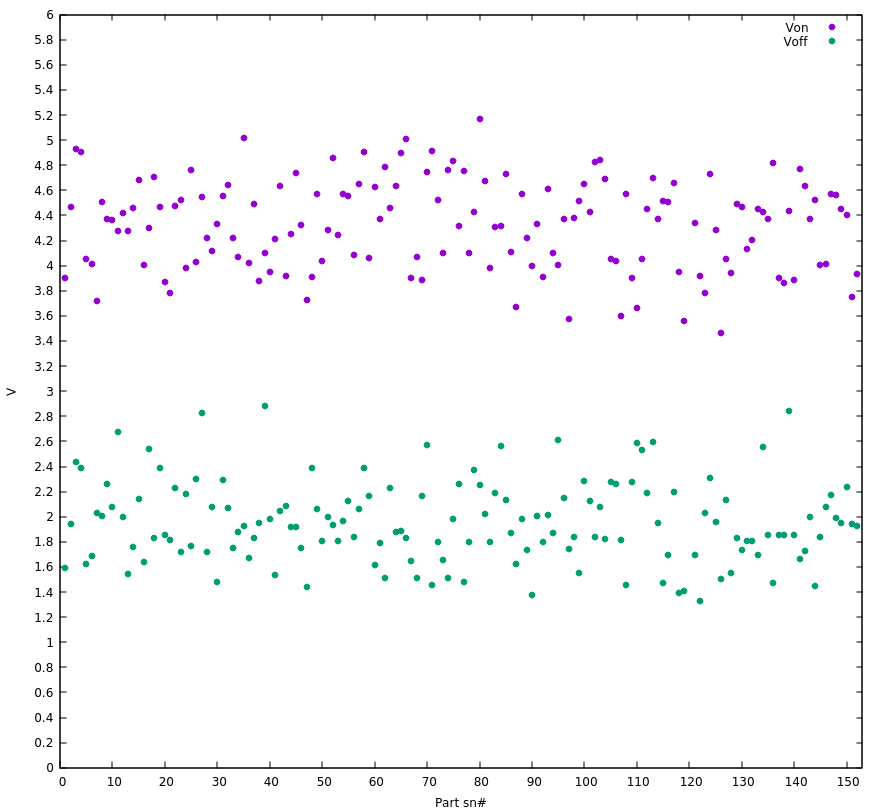
Even with the occasional outliers, we see the other major benefit of reed relays : there is a much larger "gap" between the Von and Voff clouds, compared to the RES15. The larger the gap, the less sensitive to parasites ! There is at least 1V of margin so the power supply can be less filtered => cheaper and more reliable !
OTOH the "outliers" can be used as buffers.
Register set supply voltage
gnuplot:
set ytics 0.5 set xtics 10 set ylabel 'Hysteresis' set xlabel 'Part sn#' set yr [0:5] set xr [0:153] plot "RES64.log" using 1:(($2+$3)/1000) w points pt 7
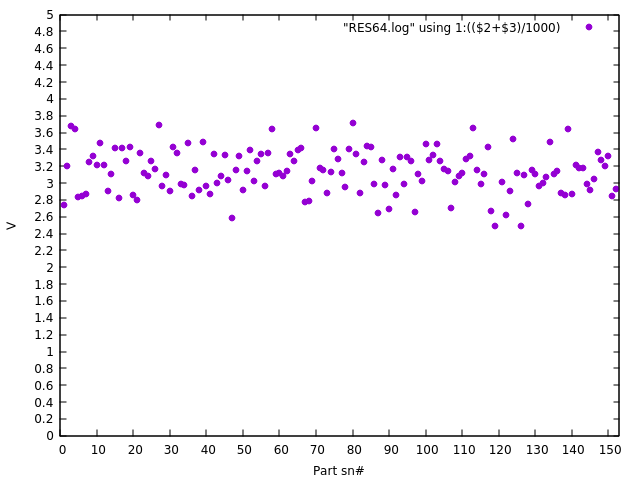
The question of the voltage to apply to the register set is critical as well, since reliability/retention are affected, but easy to evaluate : it's simply the average of Von and Voff, and is shown to be in a band centered around 3.2V. This means I can reuse the rails of the Numitron-based display modules, using -3.3V-0V-+3.3V. Or a 6.6V unipolar supply. Neat.
The band's medium value and width will change once the "sensor" parts are taken out of the pool. Overall it's a great news because the comfortable margin (compared to the RES15-based R7) greatly simplifies the design of the power supply. Not only has the current dropped (thus reducing the size of the filtering capacitors as well as the self-heating-related drifts) but there can be only one regulator and tuning point (instead of one per board). And because the load is constant, the working point is set with a simple rheostat in series, of a lower rating than what was planned for the previous version that used RES15s.
The register set will use a pair of relays for each bit and the first plot (XY) will help select the pairs : they are closest from each other. Maybe I can come up with some sort of automatic partitioning...
"Matching" relays further increases the resilience : when the power supply fluctuates, both relays will behave almost identically and this will prevent one bit from flipping while the other half didn't change.
.
 Yann Guidon / YGDES
Yann Guidon / YGDES
Discussions
Become a Hackaday.io Member
Create an account to leave a comment. Already have an account? Log In.